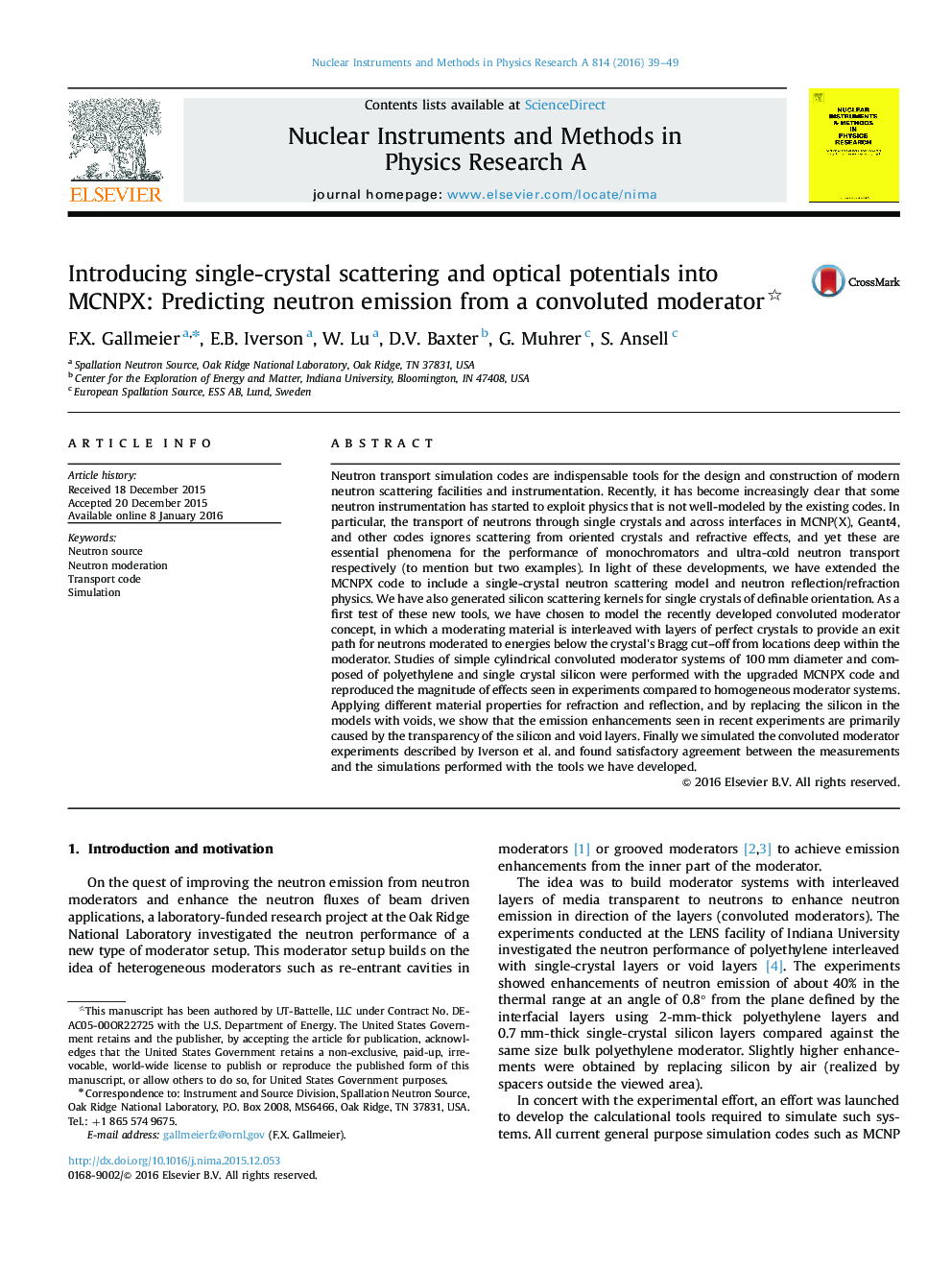| کد مقاله | کد نشریه | سال انتشار | مقاله انگلیسی | نسخه تمام متن |
|---|---|---|---|---|
| 8170967 | 1526312 | 2016 | 11 صفحه PDF | دانلود رایگان |
عنوان انگلیسی مقاله ISI
Introducing single-crystal scattering and optical potentials into MCNPX: Predicting neutron emission from a convoluted moderator
دانلود مقاله + سفارش ترجمه
دانلود مقاله ISI انگلیسی
رایگان برای ایرانیان
کلمات کلیدی
موضوعات مرتبط
مهندسی و علوم پایه
فیزیک و نجوم
ابزار دقیق
پیش نمایش صفحه اول مقاله

چکیده انگلیسی
Neutron transport simulation codes are indispensable tools for the design and construction of modern neutron scattering facilities and instrumentation. Recently, it has become increasingly clear that some neutron instrumentation has started to exploit physics that is not well-modeled by the existing codes. In particular, the transport of neutrons through single crystals and across interfaces in MCNP(X), Geant4, and other codes ignores scattering from oriented crystals and refractive effects, and yet these are essential phenomena for the performance of monochromators and ultra-cold neutron transport respectively (to mention but two examples). In light of these developments, we have extended the MCNPX code to include a single-crystal neutron scattering model and neutron reflection/refraction physics. We have also generated silicon scattering kernels for single crystals of definable orientation. As a first test of these new tools, we have chosen to model the recently developed convoluted moderator concept, in which a moderating material is interleaved with layers of perfect crystals to provide an exit path for neutrons moderated to energies below the crystal׳s Bragg cut-off from locations deep within the moderator. Studies of simple cylindrical convoluted moderator systems of 100 mm diameter and composed of polyethylene and single crystal silicon were performed with the upgraded MCNPX code and reproduced the magnitude of effects seen in experiments compared to homogeneous moderator systems. Applying different material properties for refraction and reflection, and by replacing the silicon in the models with voids, we show that the emission enhancements seen in recent experiments are primarily caused by the transparency of the silicon and void layers. Finally we simulated the convoluted moderator experiments described by Iverson et al. and found satisfactory agreement between the measurements and the simulations performed with the tools we have developed.
ناشر
Database: Elsevier - ScienceDirect (ساینس دایرکت)
Journal: Nuclear Instruments and Methods in Physics Research Section A: Accelerators, Spectrometers, Detectors and Associated Equipment - Volume 814, 1 April 2016, Pages 39-49
Journal: Nuclear Instruments and Methods in Physics Research Section A: Accelerators, Spectrometers, Detectors and Associated Equipment - Volume 814, 1 April 2016, Pages 39-49
نویسندگان
F.X. Gallmeier, E.B. Iverson, W. Lu, D.V. Baxter, G. Muhrer, S. Ansell,